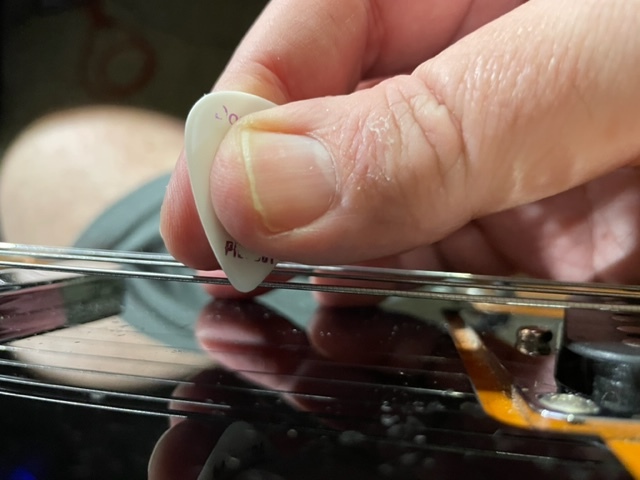I don’t have a guitar in front of me but I can switch between this if I have to. It’s not a technique I plan on using so I haven’t worked on that, but if you told I had to get really good at switching between this and other techniques, sure. It would be roughly similar to EVH switching between his tremolo technique and his other techniques.
It’s pretty comfortable.
I don’t know. But in general trailing edge always feels a little to me like the pick is going to fly away - with this grip anyway. We added a little animation in the original Cracking the Code series about this.
No, completely spontaneous. Over the past three or four years I’ve begun to think that the ability to generate new ways of doing things, unprompted, is actually a critical self-teaching skill. If you’re starting from zero, meaning you have absolutely no idea how something is played, and all you know is that it is possible, then that is when this skill is most critical. However, even if you have a visual reference, or good teaching, there is probably still some element of this involved in learning.
A teacher can only show you so much. One of our videos can only show you so much. We may be able to help eliminate the majority of the uncertainty by showing you where to place your hands on the guitar, and how to move. Hopefully the best teaching can eliminate so much of the uncertainty, that only a very small amount of trial and error is left over. But even in such a case, there may still be very small adjustments, at a level that is hard to see on camera, that we can’t show you, but influence the feel of things. So even in the “good teaching” scenario, the ability to make small changes, somewhat intentionally, is probably a type of motor learning skill that makes learning faster / easier. That’s my guess anyway.





